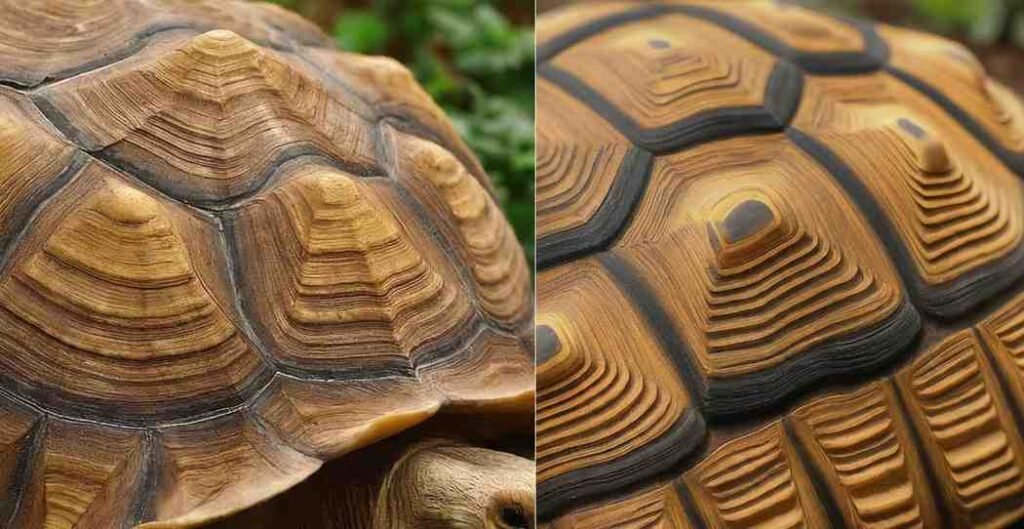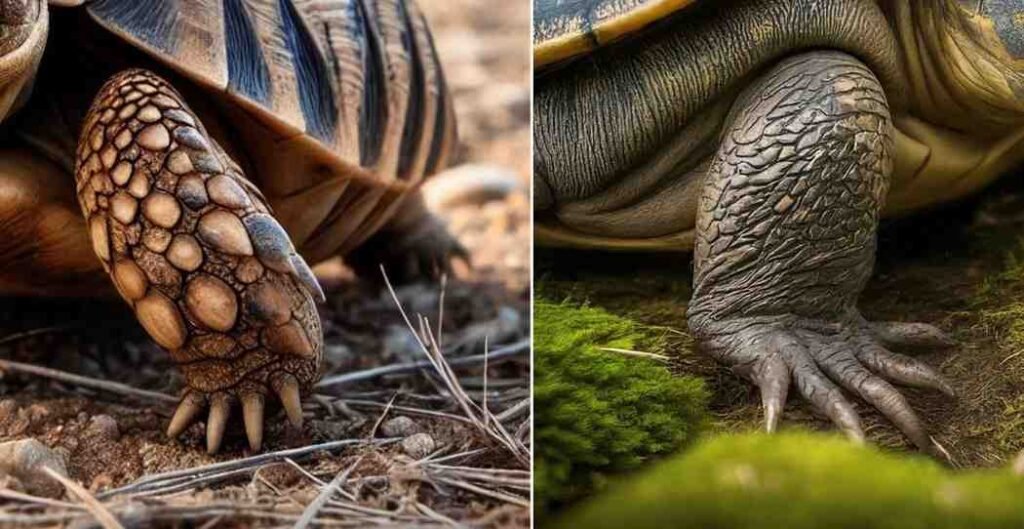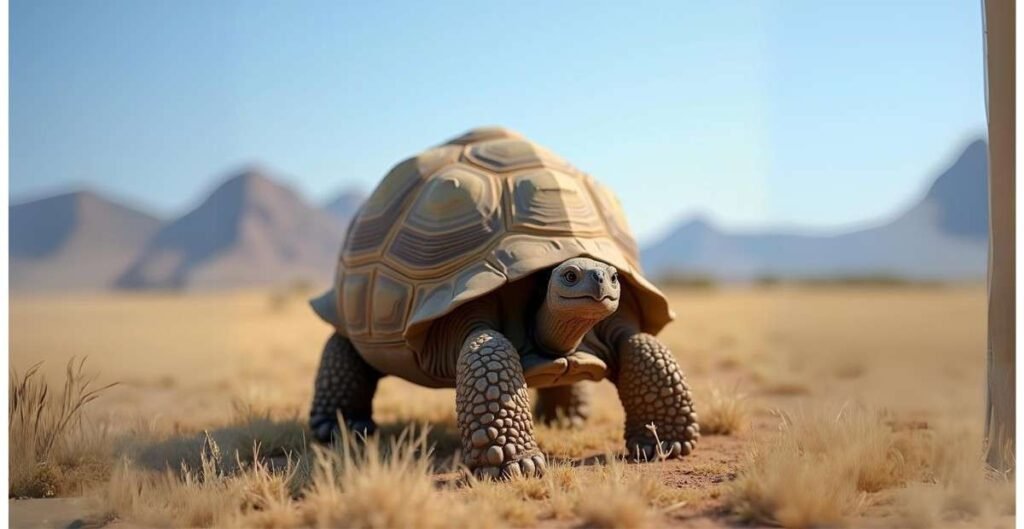If you are a new tortoise owner and don’t know the specific tortoise species identification – then having this question “What kind of tortoise do I have?” is no wonder. Identifying tortoise species is essential for a pet owner, to take care of them accordingly. It means identifying tortoises helps owners know what to feed, how to care for them, and how to provide the best environment for their pets.
Everyone who has a tortoise pet or a hobbyist, or works in conservation needs to know about tortoise species. From shell shape to other behavioral clues can help you to get the answer “What kind of tortoise do I have?” Let’s check out what you’ll need to know to identify the right kind of tortoise.
Table of Contents
What Are The Basic Physical Characteristics for Tortoise Species Identification?

Identifying tortoise species often starts with morphological characteristics. You can take a look at the following clues:
Shell Shape and Texture
In most cases, you can distinguish species by looking at the shape and texture of the tortoise’s shell. For example, desert tortoises have thick, dome-shaped shells that protect them from predators and harsh conditions. Like angulate tortoises, South African tortoises have high-domed shells with distinctive features such as an extended “gular scute” (a neck shield).
If you’re wondering: “What kind of desert tortoise do I have?” Consider if the shell is flat or more dome-like. Most terrestrial turtles have dome-shaped shells, but aquatic turtles have flatter, streamlined shells that let them swim better.
Scute Patterns and Colors
For tortoise species identification, there’s a lot to learn from scutes, the plates on the shell. Common tortoise species, like the Greek tortoise, have unique vertebral and costal scute patterns. These scutes have different patterns and colors depending on the species. You can also identify baby tortoises by looking at these patterns. For example, young star tortoises have spectacular radial patterns that fade as they mature.
Size and Growth
The sizes of tortoises vary depending on their species and age. A Greek tortoise or a Russian tortoise can get up to 12 inches long as an adult. A baby tortoise’s size also helps to identify it; smaller species, like the Egyptian tortoise, remain tiny even as adults.
If you want to be absolutely specific about which turtle you have, you can check this post here about 22 different tortoise details.
Neck and Limb Features for Tortoise Species Identification

Now let’s see the next physical traits –
Neck Length and Movement
Different tortoises have different neck lengths, which is a good way to identify them. The necks of some species are longer, retractable, while those of others are shorter, stiffer. For instance, South African tortoises have shorter necks than other regional species. Because of this retracting behavior, they can live in places where they can protect themselves from predators by hiding in their shells.
Some species, like the African spurred tortoise (Sulcata), have longer necks and more movement. The longer necks of these tortoises often help them reach food and the same they can retract their neck as needed. If you know how long and flexible a tortoise’s neck is, you can differentiate it from other regional species with shorter necks, like the Mediterranean or Greek.
Limb Structure
Tortoise limb anatomy differs greatly between species, especially in how the legs adapt to different environments. Desert species, like the Sulcata tortoise, have shovel-like front legs and strong thick limp that dig holes for shelter. It’s easy for these tortoises to get around rocky or sandy terrain with their limbs.
The forest dweller red-footed tortoise, for example, has slender legs that allow it to travel through softer, more vegetated environments. Their leg or claw is not made to burrow, but for walking on uneven surfaces.
Still, if you have this question, “How do I tell what kind of tortoise I have?” You can check their limbs and find out the answer. In South African species, their front legs are big and sturdy, so they are able to survive harsh conditions. Desert species have rougher, more distinct limbs.
What Are The Behavioral Cues for Identifying Tortoise

You can also determine your tortoise species from their behavioral attribute –
Active Times: Diurnal vs. Nocturnal Behavior
The easiest way to identify your tortoise is by watching when it is most active. The diurnal tortoise species are active all day than night. Common pet tortoises like Sulcatas and Russians spend most of their time basking in the sun or eating. Some species, like Leopard tortoises, are more active at dawn and dusk when it’s cooler.
If you know your tortoise is diurnal or more active during the twilight hour, you can have the answer to this question, “How do I know what kind of tortoise I have?”.
Foraging Habits and Movement Styles
Tortoises’ foraging habits and mobility are closely related to their habitat. Desert tortoises, such as the Sulcata, move slowly but they are powerful diggers who dig burrows to get rid of the heat. They prefer leafy greens and eat from low-growing plants like grasses and shrubs. You will notice these characteristics for tortoise species that live in arid climates.
The red-footed tortoise lives in forests as we already mentioned. They can move more quickly and efficiently through dense forests. These tortoises consume fruit, leaves, and other forest flora, and they forage in broader areas. You can tell if your tortoise is from a desert or a forest by observing how it moves and what it eats.
How These Traits Help in Identification
If you’re still wondering, “How do I know what kind of tortoise I have?” Check out these behaviors to find out. Some desert species can dig more and move slowly, while forest species are more agile and prefer leafy food. You can identify your tortoise’s species more accurately by observing these behavioral indicators.
Geographic Location and Its Role in Tortoise Species Identification

In order to tell what species of tortoise it is, we need to know its habitat. There are a lot of different habitats where South African tortoises live, from arid savannahs to coastal scrublands. Tortoises like these usually have high-domed shells, and their color blends into their surroundings. There are other species of tortoise like the Sulcata tortoise, that live in dry climates with minimal flowers,.
The wet forests of South America are home to tropical species such as the red-footed tortoise. Compared to desert species, these tortoises are more colorful, with bright red or orange patterns.
Why Location is a Strong Indicator of Species?
Geographic location is a reliable indicator for distinguishing tortoise species. For instance, the Angulate tortoise, or the Speckled Padloper are most likely the species of tortoise you can have from South Africa.
If you know where a tortoise was found, you can narrow down the possibilities immediately. If pet owners want to provide their tortoises with the best possible environment, it is essential to understand their original habitat. You can have ideas about the care, climate, and nutrition requirements if can analyze the tortoise’s origin.
So geographic indications can be useful for identifying species, especially when you can combine the information with physical traits and behavioral clues.
How to Identify Baby Tortoise Species?
It is difficult to identify baby tortoises because their features are not completely developed. You can answer the question, “What kind of baby tortoise do I have?” – if you pay attention to the growth stages and early features we discussed. For baby tortoise identification, two of the most important aspects are its shell shape and texture. In some species, a baby tortoise’s dome is less distinct than an adult’s. For example, baby Sulcata tortoises have flat shells that become dome-shaped with age.
Important Clues from Color Changes and Shell Development
Baby tortoises usually have lighter colors that darken as they get older. Tortoise breeds like the Russian and Leopard tortoise hatchlings have pale, fragile shells, so this color change is common. As the shells develop, they stiffen and darken, and it becomes easier for species identification.
One of the most important indicators for baby tortoises like adults is the scute pattern. Baby tortoises usually have simpler scute arrangements that get more distinct as they grow. To identify the species of a baby tortoise, you need to watch how these characteristics develop.
Tips for Pet Owners: Pet Tortoise Species Identification
In order to provide appropriate care and understand your pet tortoise’s needs, it’s better to identify it first. The first thing to consider is the physical characteristics of the shell, such as its shape, size, and scute pattern. In contrast, the shell of a Russian tortoise is smoother and rounder than that of a Leopard tortoise, which has distinct spotted markings. A desert tortoise, which has spiked scales on its legs such as the Sulcata, also has a large, high-domed shell.
Ensuring Proper Care by Knowing the Species
It is important to know the species of your pet tortoise so you can provide it with the appropriate environment, diet, and care. Sulcata tortoises do well in arid conditions, but tropical tortoises need higher humidity, such as Red-footed tortoises. If you correctly identify your pet tortoise, you will know how much space, UV lighting, and food variety it needs.
If you’re unsure, talk to a veterinarian who specializes in reptiles or search online databases to see whether your pet’s traits match those of others.
Conclusion: What Kind of Tortoise Do You Have?
For proper care and protection, you should identify the species of your tortoise. Knowing or identifying tortoise species from these traits we discussed can be exciting. However, most of the tortoise species have some similarities, especially when it comes to diet. So, consider checking all of the above traits if you want to identify your certain tortoise species.
